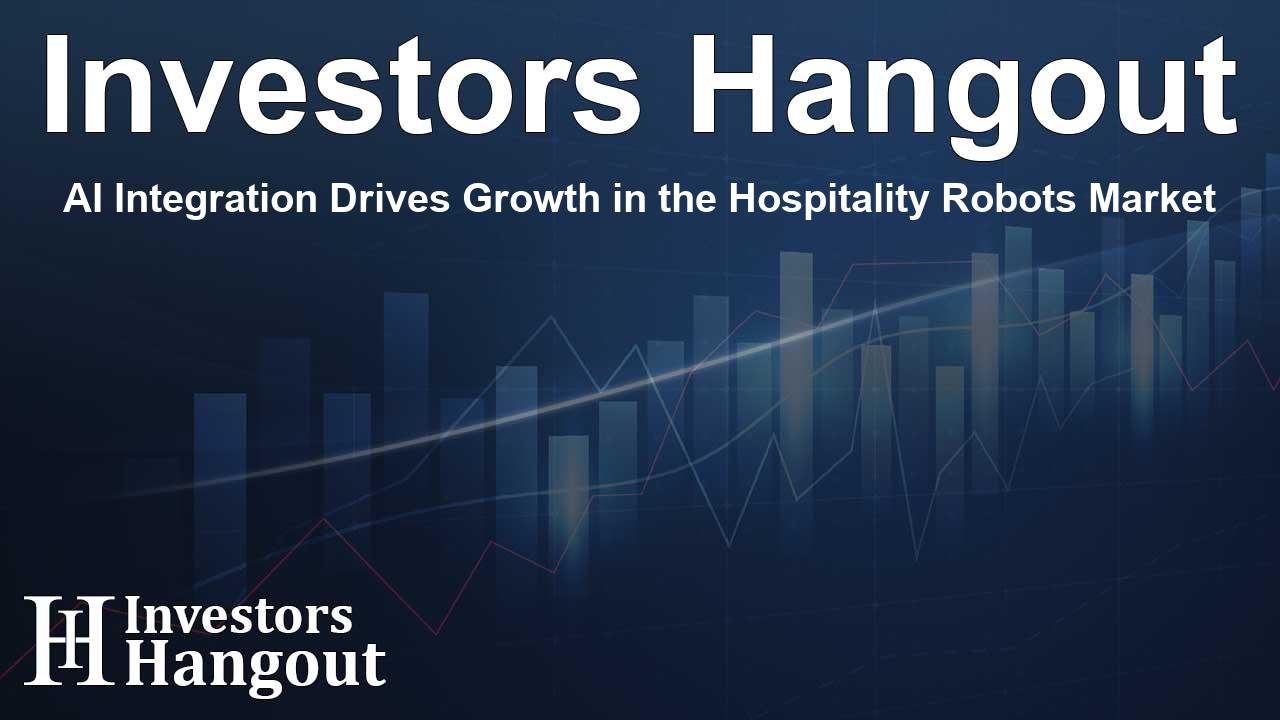AI Integration Drives Growth in the Hospitality Robots Market

Understanding the Growth of Hospitality Robots Market
The hospitality robots market is witnessing a remarkable transition, fueled by the increasing integration of artificial intelligence (AI) in various robotic systems. As businesses within the industry evolve, the demand for automated solutions in hotels, restaurants, and tourism services is on the rise. According to recent insights, the market is projected to grow by approximately USD 663.2 million from 2025 to 2029, marking a strong compound annual growth rate (CAGR) of 16.7%. The acceleration towards AI-enhanced robotics is transforming customer experiences.
Market Dynamics and Drivers
Automation in hospitality is gaining significance as operators look to enhance overall efficiency and optimize customer interactions. Robots are now being introduced to fulfill various roles, including front-desk check-ins, cleaning tasks, and food deliveries. With the trend of contactless services on the rise, delivery robots are particularly in demand, paving the way for improved guest satisfaction and operational effectiveness.
AI's Role in Market Advancement
AI technologies equip robots with advanced functionalities, allowing them to adapt to dynamic environments. For instance, robots can now recognize faces and voices, navigate through complex settings, and interact seamlessly with guests. This shift not only streamlines operations but also sets a new standard for service excellence within the hospitality sector.
Challenges Facing the Hospitality Robots Market
Despite a promising outlook, the hospitality robots market does face certain hurdles. The initial costs associated with deploying advanced robotic systems can be substantial, varying significantly based on the robot's capabilities and brand reputation. Smaller robots might start from around USD 5,000, while larger, multifunctional units with sophisticated technology can exceed USD 100,000. Organizations must also consider ongoing maintenance and training expenses.
Security and Employment Concerns
While technology advances, concerns over data security and privacy remain critical. Hospitality businesses must implement measures to protect guest information and ensure ethical usage of robotic systems. Furthermore, the integration of robots in various roles prompts discussions about workforce implications, necessitating a balance between automation and human roles in such environments.
Segment Analysis in Hospitality Robotics
The hospitality robots market can be segmented based on end-users, including hotels, restaurants, and tourism sectors. Notably, hotels are leading this market due to a growing reliance on robotics to enhance guest service, especially amid shifting health and safety protocols. Companies are continuously innovating their robotic offerings to meet diverse operational needs.
End-User Growth Projections
As the industry adapts to evolving customer behavior, significant investment is directed towards the hotel segment. Known players are enhancing their product lines, focusing on not only improving efficiency but also enriching the overall guest experience through innovative robotic solutions. Robots are predicted to take on roles that involve room service, cleaning, and even maintenance tasks, thereby solving labor shortages faced by many establishments.
The Future of Hospitality Robotics
The trajectory for hospitality robots appears optimistic as the integration of IoT technologies takes center stage. Connected systems facilitate a seamless flow of information, ensuring real-time data management that enhances service quality and operational efficiencies. The potential for further research and development in AI within the hospitality robotics sector promises exciting advancements and opportunities for growth.
Frequently Asked Questions
What is driving growth in the hospitality robots market?
The hospitality robots market is driven by the increasing adoption of AI technologies and automation in the hospitality industry as businesses seek to enhance efficiency and guest satisfaction.
What are the biggest challenges facing the market?
Challenges include high initial costs of robots, concerns surrounding data security, and the impact of automation on employment in the hospitality sector.
What types of robots are commonly used in the hospitality industry?
Commonly used robots include front-desk assistants, delivery robots, cleaning machines, and mobile guidance robots.
How is AI contributing to hospitality robots?
AI enhances robotic functionality through features such as speech recognition, navigation, and data processing, allowing robots to interact intelligently with guests.
What is the market outlook for hospitality robots beyond 2029?
The market is expected to continue its growth trajectory as technology evolves, with a greater emphasis on integrating AI, IoT, and automation into business operations for a superior guest experience.
About The Author
Contact Lucas Young privately here. Or send an email with ATTN: Lucas Young as the subject to contact@investorshangout.com.
About Investors Hangout
Investors Hangout is a leading online stock forum for financial discussion and learning, offering a wide range of free tools and resources. It draws in traders of all levels, who exchange market knowledge, investigate trading tactics, and keep an eye on industry developments in real time. Featuring financial articles, stock message boards, quotes, charts, company profiles, and live news updates. Through cooperative learning and a wealth of informational resources, it helps users from novices creating their first portfolios to experts honing their techniques. Join Investors Hangout today: https://investorshangout.com/
The content of this article is based on factual, publicly available information and does not represent legal, financial, or investment advice. Investors Hangout does not offer financial advice, and the author is not a licensed financial advisor. Consult a qualified advisor before making any financial or investment decisions based on this article. This article should not be considered advice to purchase, sell, or hold any securities or other investments. If any of the material provided here is inaccurate, please contact us for corrections.
